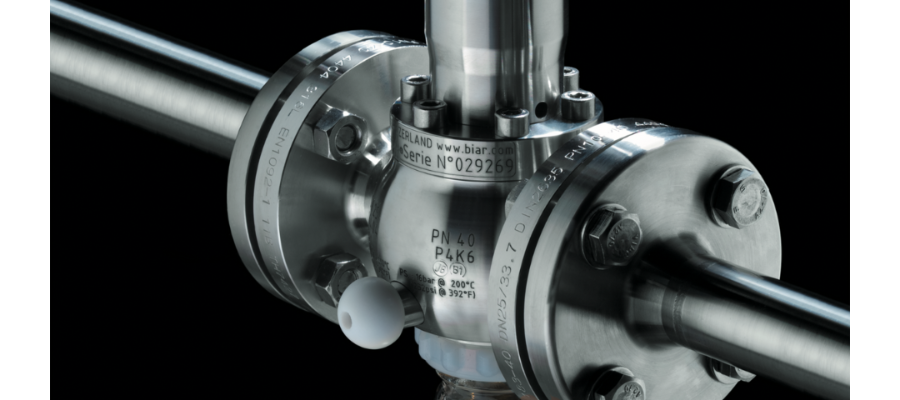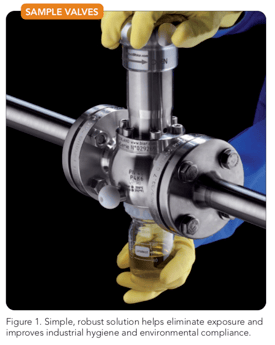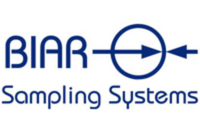

Safe Grab Sample Systems Bolster Bottom Line
Grab representative samples in a simple way the first time, every time.

GRABBING SAMPLES of hazardous chemicals in liquid and gas states is challenging but necessary. Manufacturers rely on quality samples to ensure products specs and operators rely on this equipment to help them grab those samples. But not all sampling platforms are the same. Chemical Processing spoke with Yvan Masson, Executive Vice President of BIAR sampling systems, a manufacturer of liquid and gas sampling systems, to learn how the right sampling system can make a big difference for a plant’s bottom line.
Q: How can sampling valves improve chemical plant safety and efficiency?
A: Certain processes are just not sampled because it’s too difficult to do so. But if you’re able to measure and take corrective action in the middle of the process, you’re more effective and efficient because you’re not waiting until the end to realize that your production is not within the specs. I’ve heard operators having to grab a sample with a scoop or a bucket directly from the top of the reactor. To do so, they have to wear heavy PPE and the whole process itself is outdated; it’s not safe and it’s not efficient.
Q: That sounds dangerous. How can safety be improved?
A: You have to understand what sampling is. First of all, you have to get a quality sample. A quality sample means a representative sample. And to get a representative sample, there are only two ways to do that. The traditional way is by purging and flushing the equipment and then grabbing a representative sample. It’s a bit like turning on the tap, letting some product flow to the drain, and then collect- ing your sample in a clean bottle. I know that’s very rudimentary, but even the most sophisticated closed-loop systems that allow the process to be done without exposure require purging, flushing and dealing with the waste.
Another and better way is to get a directly representative sample the first time every time. If you use a system that has absolutely no dead space, then no purging and flushing is needed. Minimizing hazardous product handling increases safety, reduces waste and environmental emission. It also improves efficiency.
If you use a system that has absolutely no dead space, then no purging and flushing is needed.
 Q: Why just one sampling valve at a time? Why not go all-in?
Q: Why just one sampling valve at a time? Why not go all-in?
A: Well, that’s a very good question. From our point of view, it’d be great if customers would decide to change all devices at one time. While sampling
is important, more often than not, this is not the priority. There are other priorities like pumps and control valves. Also, if it’s not broken, why fix it? And that sometimes is the mentality. What I suggest to customers is it’s better to start where the biggest impact can be seen — the most challenging sample point. Our range of sample valves is not necessarily for every plant or every unit within those plants, but for those units that put priority on safety, sample quality, industrial hygiene, and the environment. Also, to be effective, operators have to trust the new system. We highly recommend picking the most challenging sample point and doing something about it. Once the operators see how easy it is to use an inline sample valve as opposed to a sample panel, for example, they’ll beg maintenance and management to replace all sample points. Most plants are still utilizing technology that has existed since the 1950s. While these systems may have advantages, in many cases they were not designed with safety or modern standards of industrial hygiene in mind. Challenging the status quo and adopting a new product, or just a different product as a matter of fact, is often considered risky. Our product has been in use since the late 1970s throughout Europe and the rest of the world and has a proven track record when it comes to reliability.
Q: What are the differences between traditional sample panels and what you’re offering at BIAR?
A: Sample panels have multiple fittings and valves and are complicated to use. It requires opening the tap and purging and then it goes to the flare. The new sample panels are sophisticated and they allow the whole process to be done without exposure. But for that, you need nitrogen to push the liquid, you need a vent, you need a flare connection and so on. Typically, there are a multitude of valves to operate, and this has to be done in a precise sequence to get the job done in a safe and effective way.
Imagine if the plant alarm goes off while the operator is halfway through sampling; what does he have to do? Well, he or she has to go to the nearest shelter-in-place. And what happens with the sample panel if it’s halfway open, halfway purged? It’s very complicated. That’s one of the problems. The main difference with our systems is they are robust and simple to use. They are very intuitive and there’s only one valve to operate. It’s an inline valve, and as standard, our valves come with a spring-to-close handwheel, also known as a dead man's handle, which springs back and shuts the valve should anything happen. So, on the one hand, you have a system that is complicated, not very robust, and inefficient and on the other, you have a simpler, safer and more efficient system. So it’s a big difference.
Q: Are the BIAR sampling systems ideal for every sample need?
A: BIAR sample valves are most suitable for applications where the following are important: sample quality, industrial hygiene and safety. As a rule of thumb, the more hazardous the application is, the better fit it will be. If the product is not hazardous or is very easy to recycle, then a simple tap or ball valve may be a better option from a capital cost point of view.
Many facilities don’t know that they have a problem. They’ve been sampling for years with outdated technology and they think their way is the only way. But at the end of the day if the operator is wearing a lot of PPE and has to go back out and grab a second sample, it adds exposure risk and doubles the time necessary to take a sample. We ask our customers, How do you sample? Do you have to purge and flush? And if you do, would it make a difference if you didn’t have to purge and flush? If the answer is yes, then we can work with you to find a solution to see if it’s cost- effective to replace the existing installation with one of our inline sample valves.
Q: How do you justify the investment?
A: There are different types of sample valves out there and some are more cost-effective than our systems. While they might be cheaper from a capital cost point of view, the running cost is something that is often forgotten. It’s only after a couple of years, you realize you’ve already paid two or three times the cost of capital in terms of maintenance and spare parts. So that’s one of the reasons to go with a robust inline valve that requires very little, if any, maintenance at all.
Q: Are there any disadvantages with a BIAR sample valve? A: From a capital cost point of view, our sample valves may be higher. And that really is the biggest disadvantage. Also, if the product is easy to recycle and is not very hazardous and doesn’t contaminate the environment, then maybe you’d be better off with a ball valve and purging and flushing. But, even if it is easy to recycle waste, is it not better not to have any in the first place? Maybe it’s worth looking into a solution like ours. Not to mention the safety aspect. PPE should not be the first barrier of protection, it should really be the last. And that’s what we’re trying to achieve with our sample valves. They might be a little bit more expensive than a ball valve or a piston-type valve, but they offer extra protection and less exposure for the operator.
Q: Is there anything you’d like to add?
A: There are only two ways to grab a representative sample, and representative samples are the most important point of sampling. If you grab only 100 milliliters or a couple of ounces of sample out of a batch that has thousands of gallons, then those couple of ounces have to represent what you have in your reactors. The only two ways to get a representative sample are by either purging and flushing or by getting a directly representative sample the first time every time. So ask yourself, which one is better? Which one is more efficient? It’s better to have a product you can trust; lab technicians will be happy because they have reliable samples and plant management will be grateful because their plant is running efficiently and effectively.

Want to learn more?

